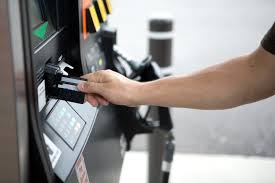Between work commutes, errands, and weekend trips, fuel costs can creep up faster than you expect. It’s one of those ongoing expenses that quietly drains your budget — especially when prices fluctuate week to week. But staying on top of your fuel spending doesn’t have to be complicated. With a bit of strategy and the right tools, you can reduce costs, track usage, and make every litre go further.
For many drivers, taking advantage of BP fuel card benefits is one of the smartest ways to start. A fuel card not only simplifies payment but also provides better visibility into how, when, and where you’re spending on fuel — which makes managing costs much easier.
Why Fuel Spending Gets Out of Hand
Fuel is a necessity, so it’s easy to underestimate how much you’re really spending until you check your bank statement. The problem isn’t just rising prices — it’s the lack of structure around how we refuel. A few extra trips here, a higher-priced station there, and suddenly your monthly fuel bill is hundreds higher than expected.
For individuals, this means less control over personal budgets. For businesses managing multiple vehicles, it can mean unnecessary overspending and poor visibility on where the money is going.
How to Take Control of Your Fuel Budget
Keeping fuel costs in check is about consistency and awareness. A few simple habits can make a big difference over time:
- Track your fuel usage – Whether you drive for work or leisure, keeping a record helps you spot patterns and waste.
- Stick to one trusted fuel provider – It allows you to predict prices, take advantage of loyalty programs, and streamline receipts.
- Plan your routes – Combine errands or deliveries to avoid extra kilometres.
- Monitor tyre pressure and driving habits – Underinflated tyres and aggressive driving can noticeably increase fuel consumption.
When you combine these steps with a fuel management tool, it becomes much easier to stay within budget.
The Hidden Value of Fuel Cards
Fuel cards were once seen as business-only tools, but today they’re just as useful for anyone looking to simplify how they manage fuel costs. They act as dedicated payment cards for fuel and vehicle expenses, offering better control, reporting, and sometimes even savings.
Here’s what makes them so effective:
- Centralised tracking: Every transaction is recorded, so you always know where your money’s going.
- Expense management: Monthly or weekly statements make it easy to track fuel costs and set budgets.
- Security: Cards can be restricted to fuel-only purchases, reducing the risk of misuse.
- Convenience: No need to keep paper receipts — everything is stored digitally.
For business owners, fuel cards can also provide tax advantages and reduce administrative work, freeing up time for more important things.
Making the Most of a Fuel Card
To get the best value from your fuel card, it’s worth setting a few rules for how it’s used — even if it’s just for personal driving.
- Set spending limits: Many cards allow you to define limits for each user.
- Review statements regularly: Look for unnecessary stops or higher-than-average spending.
- Stay loyal to one brand: Consistency helps you take full advantage of discounts or reward programs.
- Encourage efficient driving: If you manage a team, small changes in driving behaviour can lead to big savings over time.
By being proactive, you’ll quickly notice how much easier it is to manage fuel costs — and how much smoother your overall budgeting becomes.
Drive Further, Spend Smarter
Fuel will always be a regular part of life, but overspending doesn’t have to be. A few mindful habits and the right tools can transform how you handle one of your biggest ongoing expenses.
When you can see your spending clearly and plan ahead, you’re not just saving money — you’re also saving time and energy. That’s the real reward of taking control of your fuel costs.
So next time you fill up, think beyond the pump. Small changes and smarter systems can keep your budget on track and your tank — and your wallet — a little fuller for the journey ahead.
